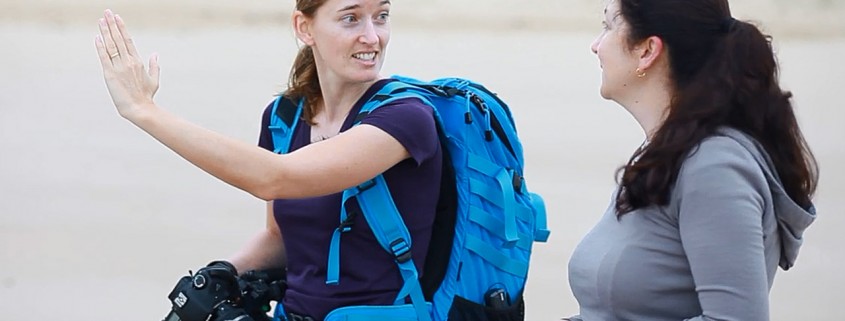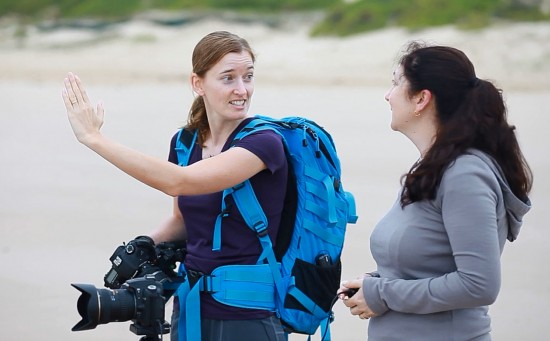Building on Shared Experiences
This blog post has been bouncing around inside my head for a couple of weeks now. People often ask me how I come up with so many ideas for blog posts – how I keep putting them out week after week, year after year. It’s really not so difficult, because each post comes from an experience – a conversation with another photographer, a question from a student, a compositional challenge in the field… and this post is no different. This post is for Dianne Hall… because she asked the question that got me thinking… and kept me thinking for the past few weeks.
We were walking along a street in Sydney, discussing photography and art and composition. I was trying to explain how I try to tap into shared experiences when I create a composition. She pointed to a man mowing his lawn near the road, and asked me what I would do with him if I were to take a photo. So, I tried to explain to her how I would work through the process. It’s difficult to put things like that into words… but that’s what I love about teaching. It forces me to find the words to explain something intangible… which in turn, gives me a deeper understanding of what I’m teaching.
I explained that in order to share the picture in my head, I have to understand how my viewer will see what I present. I can never assume that they will understand my intentions with any photograph. We can not read each other’s minds – but we can tap into shared experiences. If I ask you to imagine the call of a trumpet – you can probably pull that up in your memory. That’s a shared experience. The taste of ice cream… the feel of it on your tongue… the crunch of the cone… all of that is shared experience. I know that most people who see my photos will understand those basic things. So that’s what I need to tap into when I make a photo. And so, that’s where I begin when I’m building a composition.
So, where would I begin with a photo of the man mowing the lawn? I’d start with shared experiences. You know the smell of cut grass… but how can I share something you smell in a photo? Actually, it’s not hard to do that. I just need to trigger that smell in your mind… and I do that with a visual element. I want to be sure to include the grass flying out of the rotary mower… because that little visual detail is enough to trigger your experience of the smell of the grass. It’s an important detail. So, I’ll time my shot so that I capture the grass flying through the air. Some of you might even feel a little bit of hay fever coming on when I mention it. ;)
I can also count on you to understand the feeling of a hot day, right? And that’s an important element of the experience I’m trying to share with you. So, I’ll need to include the sweat dripping on the man’s forehead, and the sheen of moisture on his bare arms. I need to include the angle of his body as he pushes the mower… because that will trigger your understanding of hard work and exertion. I need to make sure that I am shooting from an angle that will show all these little details – and that I choose my moment carefully. I might also want to include a little bit of a sense of place. In this case, the man was mowing a little strip of grass in front of his home. I liked the smallness of his lawn. So, I’d be sure to frame my shot so you could see that he was sweating away on his tiny patch of grass… it’s an element of humor that we can all relate to.
So that’s where I’d start. Those are the basic elements I need to include if I want to communicate something to you with this imaginary photograph I’m taking. But that’s just the beginning. There’s something else that I need to consider if I want my photo to be effective. What I don’t include in the photo is just as important as what I do include. There was a line of cars parked in front of this guy’s house. Is that important to my story? It’s not. And furthermore, it distracts from my story. If I include those cars in my photo, I’m demanding that you call up other memories and experiences… which will distract from the moment I’m trying to share. I don’t want you to imagine the heat of a car on a sunny day, or the smell of auto exhaust. I don’t want you to hear the bark of a dog – so I left him out of the frame too. And I left out the lady walking toward me on the sidewalk, and the fire hydrant nearby… and so on.
Sometimes it’s tough to break down a scene like this – and its even more difficult to create a photo that conveys a vivid experience, feeling, or mood. Sometimes, a photo will just happen – appearing fully-formed as if it had a life of its own. But more often than not, I think you’ll find that photos that have real impact require some thought and planning.





Woops. How did I get that wrong? Sorry Varina. Brent
No worries, Brent. :) It happens all the time.
Sorry Varina. I attributed to post to Jay. I think Brent made the same mistake :0)
Jay, you have hit it on the head for me. This is what I want to work on to improve my photo skills. I think I have a good eye and technical skills but mostly my images are lacking impact. I think through a busy life we sometimes don’t or can’t take the time to as you say above “to create a photo that conveys a vivid experience, feeling, or mood”. I’m going to slow down and think and feel about my images. Thanks for the post!
Awesome! I love it when one of my posts has that effect on someone! :) Good luck, Tim!
Jay I love this story. Makes me think more before I press the shutter-release button. Excellent! Brent